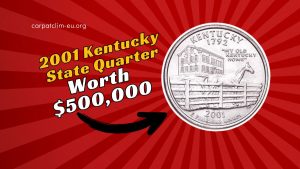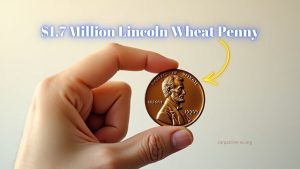The 1976 Bicentennial Quarter stands as a cherished emblem of America’s 200th anniversary, captivating both the public and coin collectors with its unique design.
However, recent sensational claims suggesting that certain versions of this coin are worth an astounding $2.2 billion have sparked widespread confusion.
This article aims to dispel these myths by providing a detailed examination of the coin’s history, actual value, and the factors that can enhance its worth.
Understanding the 1976 Bicentennial Quarter
| Feature | Description |
|---|---|
| Design | Obverse: Portrait of George Washington; Reverse: Colonial drummer with a torch and 13 stars |
| Dual Date | Inscribed with “1776–1976” to commemorate the Bicentennial |
| Mint Marks | Produced in Philadelphia (no mint mark), Denver (“D”), and San Francisco (“S”) |
| Composition | Most are copper-nickel clad; special collector’s editions contain 40% silver |
Debunking the $2.2 Billion Valuation Myth
The claim that a 1976 Bicentennial Quarter could be worth $2.2 billion is unfounded and lacks credible evidence.
Such exaggerated valuations often stem from misinformation propagated through various online platforms. In reality, while certain rare coins can fetch high prices, none have approached the billion-dollar mark.
Factors Influencing the Value of Bicentennial Quarters
While the majority of Bicentennial Quarters hold their face value of 25 cents, specific characteristics can enhance their worth:
1. Minting Errors
Double Die Obverse: Features a doubled image, particularly noticeable in the inscriptions.Off-Center Strikes: The design is misaligned, resulting in a portion of the image being off-center.Clipped Planchet: A section of the coin’s edge is missing due to a minting mishap.
Coins exhibiting such errors are rare and can command prices ranging from hundreds to thousands of dollars, depending on the error’s uniqueness and the coin’s condition.
2. Silver Composition
The San Francisco Mint produced special collector’s editions containing 40% silver.These coins bear the “S” mint mark and were not intended for general circulation.
Uncirculated silver Bicentennial Quarters can be valued between $5 and $20, with pristine proof versions potentially reaching higher prices.
3. Coin Condition and Grading
Coins are graded on a scale from 1 to 70, with higher grades indicating superior condition.Uncirculated coins with no wear (Mint State) are more desirable to collectors.
For instance, a 1976-S Silver Bicentennial Quarter graded MS69 (near-perfect condition) has been valued at up to $19,200.
Identifying Valuable Bicentennial Quarters
To determine if a Bicentennial Quarter holds more than face value, consider the following steps:
- Examine for Mint Marks and Errors: Look for the “S” mint mark indicating a silver composition and inspect for any minting anomalies.
- Assess the Coin’s Condition: Coins free from wear, scratches, or discoloration are more valuable.
- Weigh the Coin: Standard copper-nickel quarters weigh approximately 5.67 grams, while 40% silver quarters weigh about 5.75 grams.
- Seek Professional Grading: Certification from reputable grading services can authenticate the coin and provide an accurate assessment of its condition.
While the 1976 Bicentennial Quarter is a significant piece of American history, most of these coins are worth their face value. However, coins with minting errors, silver composition, or those in exceptional condition can be more valuable.
It’s essential to approach sensational claims, such as the $2.2 billion valuation, with skepticism and rely on verified information.
For an in-depth understanding of the coin’s value and history, consulting reputable numismatic resources is recommended.
FAQs
Are all 1976 Bicentennial Quarters valuable?
No, the majority are worth their face value of 25 cents. Only coins with specific errors, silver content, or in exceptional condition have increased value.
How can I tell if my Bicentennial Quarter is made of silver?
Silver versions have an “S” mint mark and weigh slightly more (approximately 5.75 grams) than standard quarters.
Where can I sell a valuable Bicentennial Quarter?
Reputable coin dealers, auction houses, and online platforms specializing in numismatics are viable options for selling rare coins.




